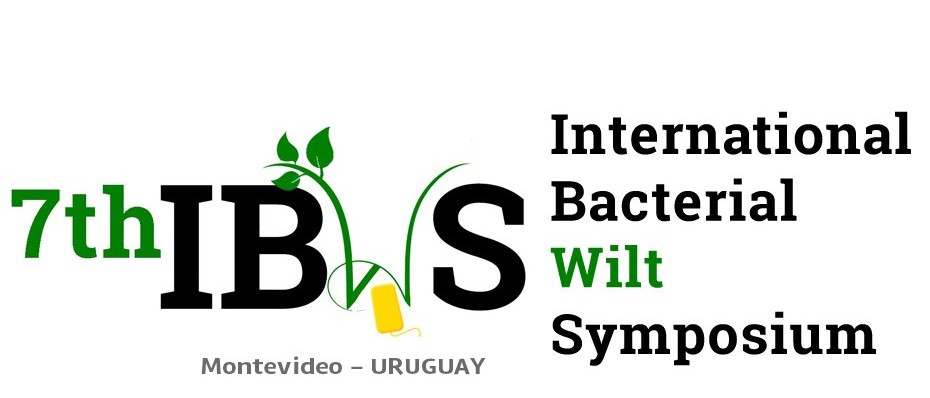Submitting: Frontiers in Plant Science and Microbiology
All invited speaker and also participants including members of scientific committee are invited to submit their scientific papers and/or reviews to the Research Topic titled “Ralstonia solanacearum–Plant Interactions: plant defense responses, virulence mechanisms and signaling pathways” in Frontiers in Plant Science and Microbiology.
Editors: Yasufumi Hikichi, Stephane Genin, Marc Valls
The deadline for the abstract submission is 1st, August, 2020, and 31th, December, 2020 for the manuscript submission.
We will keep you informed!
The proposal: Ralstonia solanacearum–Plant Interactions: plant defense responses, virulence mechanisms and signaling pathway
This Research Topic aims to collect selected contributions to the 7th International Bacterial Wilt Symposium, held in Montevideo, Uruguay, on 29th March-3rd April, 2020, to cover exciting new discoveries in the Ralstonia solanacearum-Plants Interactions.
A soil-borne bacterium R. solanacearum infects more than 250 plant species in the tropics, subtropics and warm temperature regions and induces them bacterial wilt, leading to significantly reduced crop production.
R. solanacearum normally invades plant roots from the soil, and colonizes intercellular spaces of the roots. The bacteria eventually enter xylem vessels and spread up into the stems, leading to wilting symptoms. Its high level of multiplication activates quorum sensing (QS). During QS, R. solanacearum controls the pathogenicity factors by complex regulatory networks that respond to environmental conditions, the presence of host cells and bacterial density. At the center of these networks, a LysR family transcriptional regulator, PhcA coordinates the expression of several virulence factors. R.solanacearum possesses type III secretion system (T3SS) and effectors secreted through T3SS are involved in virulence of the bacteria. Functional PhcA is involved in regulation of T3SS formation. It has been thus thought that the bacterial virulence mechanisms are mainly divided two processes dependently on the induction of hrp genes expression and the activation of QS. Thus, complex and tight regulation systems responsible for the infection process of R. solanacearum are involved in its virulence. However, since the bacteria finely tune these processes according to their population and environmental conditions, we can not fully understand R. solanacearum virulence mechanisms.
Farmers have used bacterial wilt resistant cultivars holding quantitative trait loci (QTL) to control the disease development. Plants recognize pathogen-associated molecular patterns (PAMPs) via PRR (pattern recognition receptor) to triggered PAMP-triggered immunity (PTI). After invasion into roots and attachment to plant cells, R. solanacearum secretes effectors into plant cells through T3SS to evade PTI. Furthermore, plants recognized effectors secreted through T3SS by nucleotide-binding/leucine-rich repeat (NLR) receptors, activating effector-triggered immunity (ETI). PTI and ETI as well as QTL allow us to develop control system for the disease. Though we have got growing information on not only their molecular mechanisms but also functions of effectors secreted via T3SS involved in evasion of PTI and induction of ETI, we have not yet developed the disease-resistance cultivars and efficient control system. Furthermore, recent studies on the plant microbiome have demonstrated the importance of bacterial interactions for disease development. This work may lead to the development of microbial inoculants used to control bacterial wilt.
In this Research Topic, we aim to collect manuscripts dealing with not only molecular mechanisms of R. solanacearum virulence and host responses but also development of the disease control system such as the disease-resistance cultivars andmicrobial inoculants. We hope that the studies collected in this Research Topic will shed light on a deeper understand of Ralstonia solanacearum-Plants Interactions and ultimately pave the way to deal with this devastating pathogen and developing sustainable control system on the disease.
